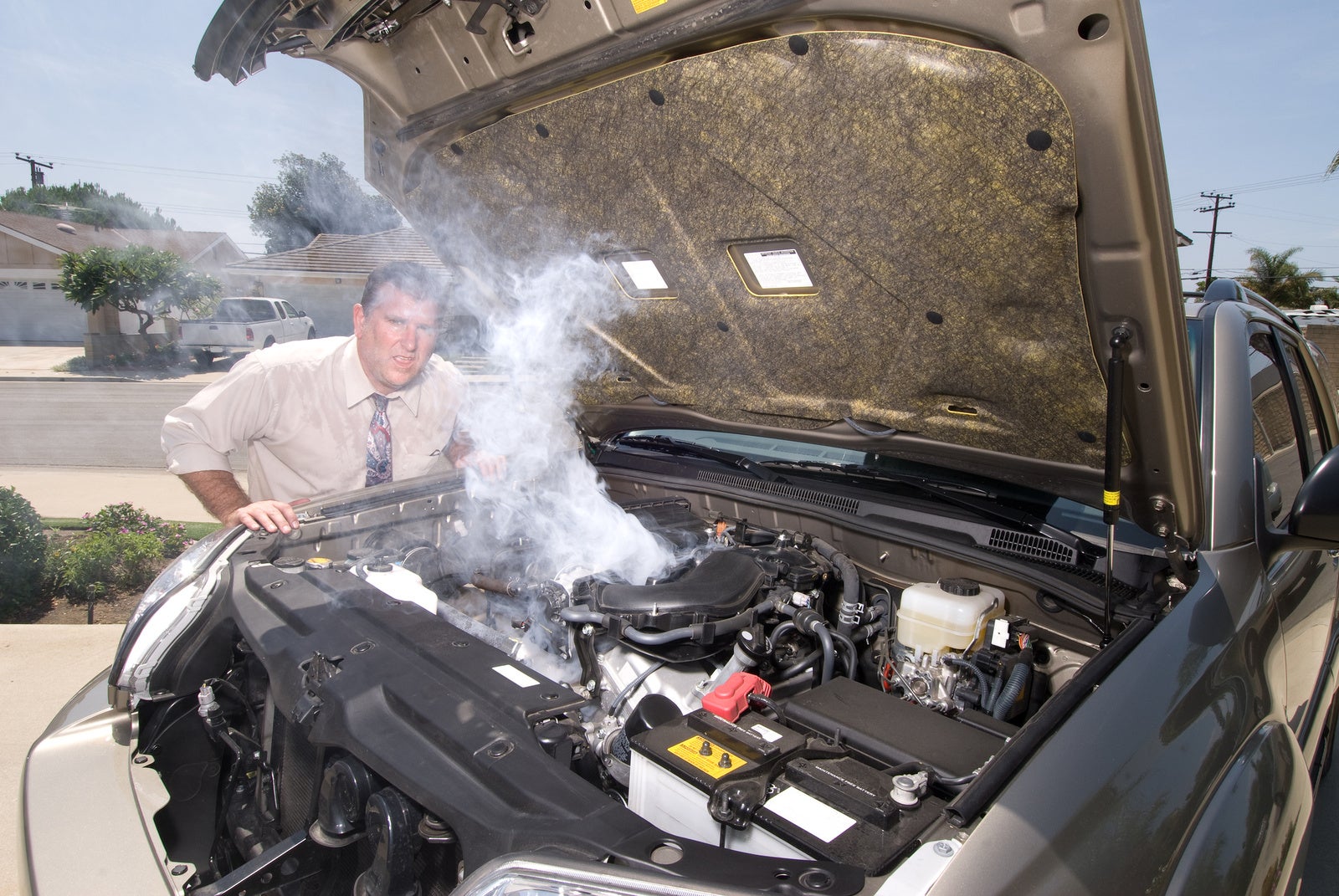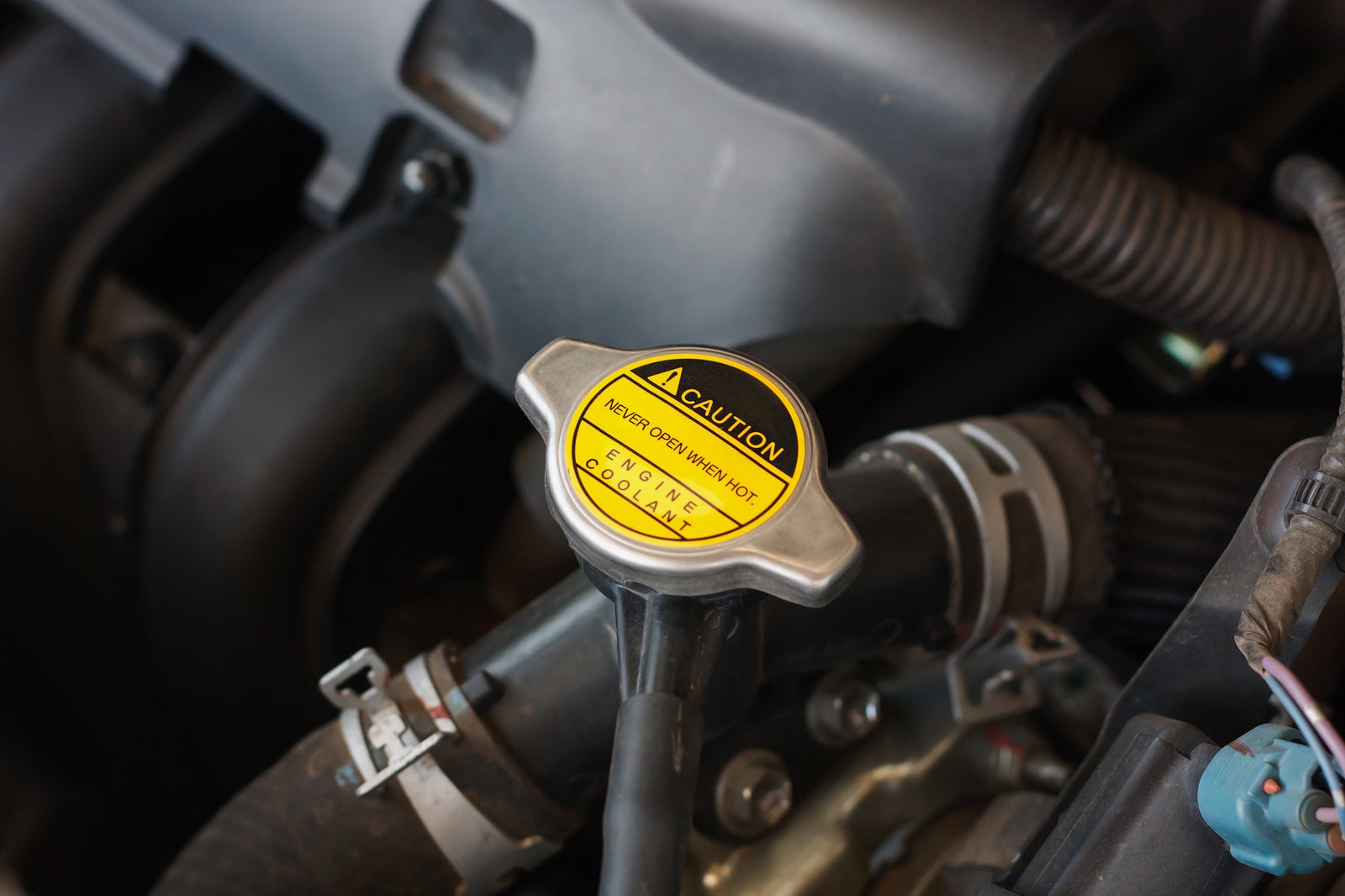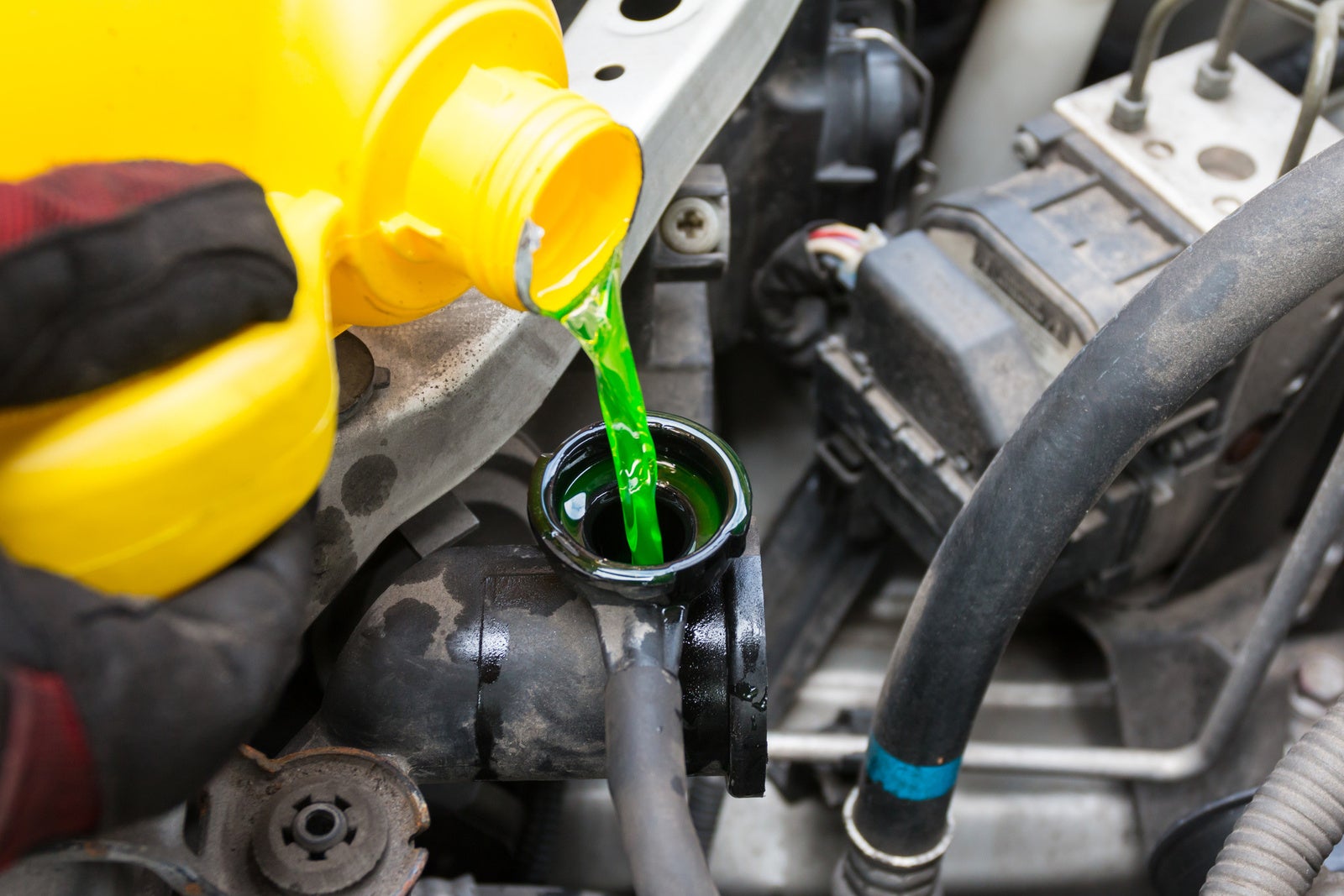Modern car engines are more reliable than ever, but there are still a few basic car maintenance checks you should perform to reduce the chances of a breakdown, not least of which is monitoring the engine coolant level every couple of weeks.
The good news is that a car’s cooling system is sealed, so in theory the amount of liquid circulating within it should not change. However, even a small leak that goes unnoticed can mean not enough coolant reaches important components, which can lead to overheating, increased engine wear, and a big repair bill.

What Does Engine Coolant Do and Why Is It Important?
For an engine to work efficiently, it needs to be kept at a safe operating temperature. Failing to do this can cause parts to warp, melt, and generally become impossible to repair. As such, it's vital to have coolant pumping around the engine. It's a vital part of the overall coolant system, which includes one or more cooling fans, radiators and hoses leading to channels through the engine block and cylinder head. If the engine isn't cooled enough, the head gasket, which forms a seal between the block and the head, can fail, causing serious damage to the engine.
In automotive terms, coolant can usually be defined as a mixture of water and antifreeze. You can buy coolant premixed or as undiluted antifreeze, to which you add a specified amount of water. The latter is generally much less expensive.
As you might expect, antifreeze is what stops the water in the coolant from freezing in the winter months, but it also gives it a higher boiling point. Throw in the fact it has properties that prevent rust from forming and rubber seals from eroding, and you begin to realise its importance to an engine’s smooth running.
How Engine Coolant Works
Coolant is pumped through channels around a car’s engine block, absorbing heat before passing through a radiator, where it cools before starting the whole process again.
Over time coolant will become less effective and can even start to corrode the metal in the engine, so it’s important to change it as the car manufacturer’s service schedule recommends. Check the owner's manual for more information. When your coolant needs changing, the entire coolant system should be flushed to remove any dirt or impurities that have built up over time.

How to Check Your Car’s Engine Coolant Level
To check the car's coolant level, park on a flat surface and make sure the engine is cold. Once you’ve opened the bonnet, you will need to identify the cooling system’s header tank. This see-through coolant reservoir provides room for the liquid to expand when it gets hot and includes maximum and minimum indicator marks on its side. You should be able to see the coolant liquid level sitting between these two marks.
If you are in any doubt about what the expansion tank looks like, consult your car’s handbook or ask a garage to point it out.
In addition to monitoring the level of your car’s coolant, you might also want to make sure it's still working effectively. To do this you can buy a tool called a hydrometer for about £5, which will tell you the freezing point of the coolant. Once you are sure the engine is cold, simply use the hydrometer to draw some coolant from the tank, ensuring the hydrometer is completely full. Fresh coolant will go as low as -30 degrees Celsius before freezing.
What Antifreeze Should I Buy?
A car in good health will be able to go between services without the need for additional coolant/antifreeze. However, if you do need to top up the system, it’s worth knowing that there are a couple of types of antifreeze, depending on the age of your car.
Broadly speaking, cars built after 1998 need OAT (Organic Acid Technology) antifreeze to protect the aluminium components within the engine. Cars built before 1998 use non-OAT or ‘glycol’ antifreeze, which is more suited to brass and copper components.
In addition, antifreeze comes in different colours, each designed for a different type of cooling system. You should not mix colours, as they are rarely compatible and can lead to problems down the line, such as deposits that block the cooling channels.
If in doubt about what antifreeze to buy, you can refer to your car’s instruction manual or ask at a garage or car accessories store.

Topping Up Your Car’s Coolant
If the coolant level is low, you can top it up by unscrewing the cap at the top of the expansion tank and adding a mixture of water and the correct antifreeze (or pre-mixed antifreeze, if you prefer). You should never do this when the engine is hot, as the pressure in the system could cause scalding-hot coolant to spill.
Adding only water will probably get you home in an emergency, but you should always think of this as only a short-term fix. Remember: The mere fact that your car requires its coolant to be topped up indicates there is a problem, so get it booked into a garage for a professional to take a look.

